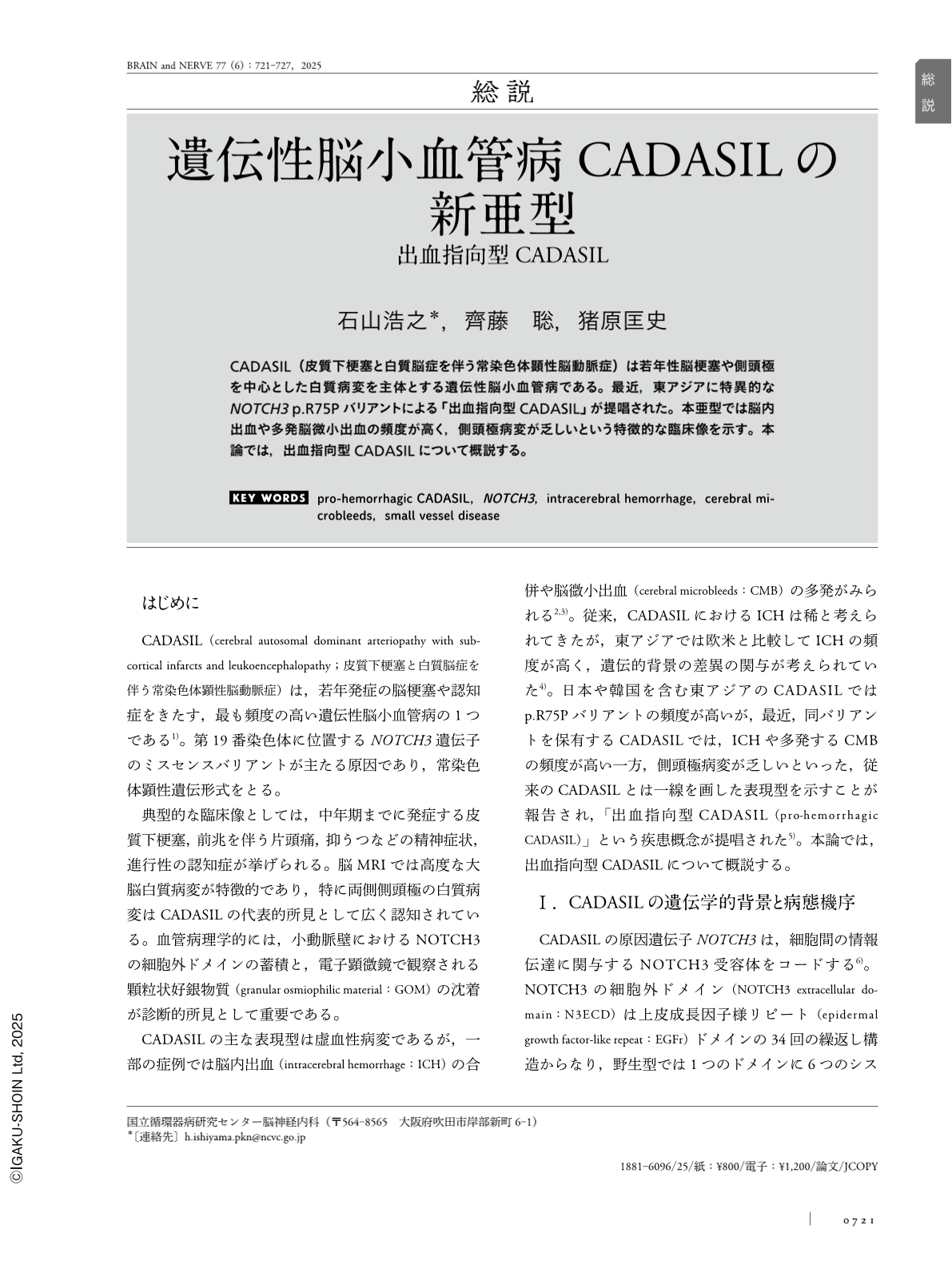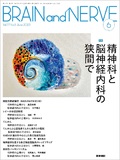Japanese
English
- 有料閲覧
- Abstract 文献概要
- 1ページ目 Look Inside
- 参考文献 Reference
CADASIL(皮質下梗塞と白質脳症を伴う常染色体顕性脳動脈症)は若年性脳梗塞や側頭極を中心とした白質病変を主体とする遺伝性脳小血管病である。最近,東アジアに特異的なNOTCH3 p.R75Pバリアントによる「出血指向型CADASIL」が提唱された。本亜型では脳内出血や多発脳微小出血の頻度が高く,側頭極病変が乏しいという特徴的な臨床像を示す。本論では,出血指向型CADASILについて概説する。
Abstract
Cerebral autosomal-dominant arteriopathy with subcortical infarcts and leukoencephalopathy (CADASIL) is the most common type of hereditary small-vessel disease causing early onset stroke and dementia. The classic CADASIL phenotype predominantly features ischemic lesions, including lacunar infarcts and white matter lesions notably involving bilateral temporal poles. However, hemorrhagic phenotypes such as intracerebral hemorrhage (ICH) and cerebral microbleeds (CMB) are increasingly being recognized, particularly among East Asian populations, compared to those of European descent, suggesting underlying genetic differences. The East Asian-specific NOTCH3 p.R75P variant shows a higher prevalence of hemorrhagic phenotypes, such as ICH and multiple CMB, typically without temporopolar lesions. Structural and pathological analyses revealed that, unlike conventional CADASIL variants, which produce extensive deposition of NOTCH3 extracellular domains in the vascular walls, the p.R75P variant exhibits reduced aggregation, providing a plausible biological explanation for its unique clinical phenotype. This review highlights the distinctive pro-hemorrhagic phenotype associated with the NOTCH3 p.R75P variant, synthesizing current insights into its genetic, pathological, clinical, and radiological features. Enhanced understanding of this variant will broaden the phenotypic spectrum of CADASIL, emphasizing the need for tailored clinical strategies for susceptible populations.

Copyright © 2025, Igaku-Shoin Ltd. All rights reserved.


